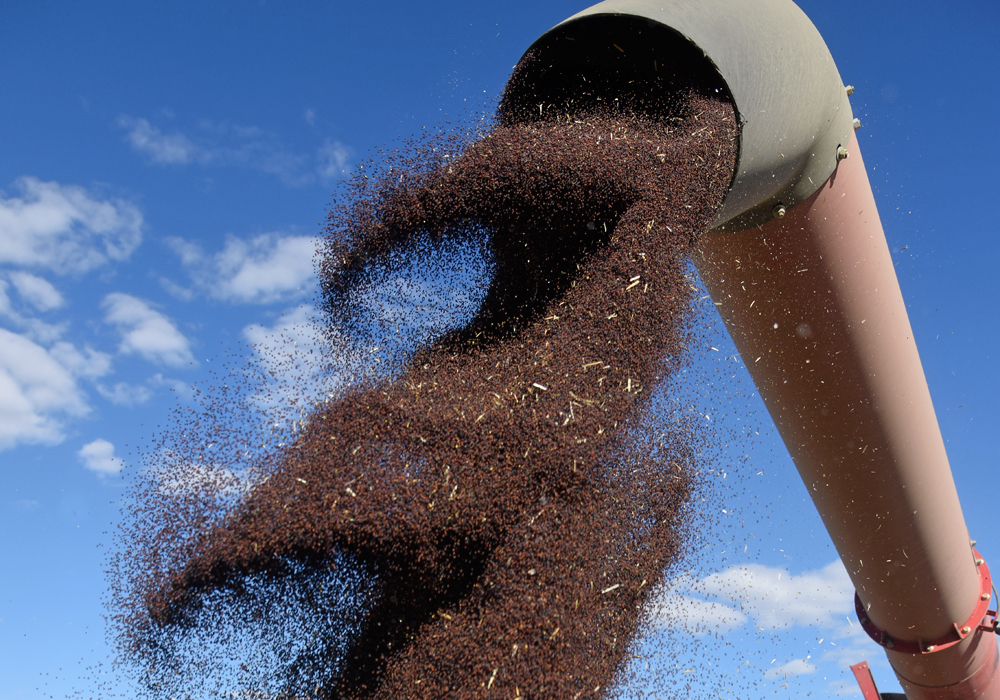China has reinstated its requirement that Canadian canola shipments may contain no more than one percent dockage.
Agriculture and Agri-Food Minister Marie-Claude Bibeau’s office confirmed that dockage allowances would drop from 2.5 percent to one percent in a March 30 statement following a call between Canadian and Chinese technical officials.
Jim Everson, president of the Canola Council of Canada, said the directive was put in place immediately.
“Our position continues to be that this is a quality issue and it ought to be subject to a discussion between the exporter and the importer and subject to contract terms,” he said. “We’d want to be sure that any imposition of a directive with respect to dockage would apply to other canola or rapeseed importers into China, from other jurisdictions, as well.”
Read Also

Farming Smarter receives financial boost from Alberta government for potato research
Farming Smarter near Lethbridge got a boost to its research equipment, thanks to the Alberta government’s increase in funding for research associations.
Dockage has been a source of contention between the Canada and China since 2009 when China first proposed the lower dockage rates, citing the risk of blackleg contamination entering Chinese canola fields. Canadian officials have argued there is minimal risk that blackleg would be transmitted through dockage. As well, Canadian canola is delivered straight to Chinese processing plants so there is little opportunity for it to mingle with Chinese crops.
In 2009, the country temporarily blocked imports of canola from Canada and Australia after shipments from those nations tested positive for the disease.
In 2016 the two countries agreed to jointly investigate the concerns and there was agreement to continue allowing trade at 2.5 percent dockage in the interim.
When that memorandum expired at the end of March, China reverted to its previous policy of allowing only one percent.
While industry has raised concerns in the past a one per dockage rate would increase costs and lower trade efficiency, Canada’s grain export system routinely adds dockage back into cargo holds to bring levels to the maximum allowed limit.
(Canadian Grain Commission statistics show that dockage in the Canadian canola exports since the start of the current crop year have ranged between 1.65 percent and 2.02 percent. )
Media reports that China was restoring access to his market Richardson International and Viterra, two companies delisted from importing canola to China in March 2019, were later revised.
Bibeau’s office confirmed reporting from Reuters claiming China had lifted the year-old ban on those companies was inaccurate.
“I guess their (Reuters’) China office received some incorrect information. I’m not going to speculate on what happened there,” Oliver Anderson, director of communications for Bibeau told the Western Producer.
“They (China) have not relisted Viterra and Richardson, although there are definitely ongoing positive conversations with the Chinese.”
Delisting imports from those companies – who make up a bulk of Canadian canola exports – has had a significant impact.
“Canada has been shipping about 30 percent of normal canola seed exports to China since March 2019, and we are still in discussion on a path forward to restore trade with the delisted companies,” said Bibeau’s office in a statement. “Regaining full market access for Canadian canola seed remains our priority, and we continue to engage Chinese officials.”
About 40 percent of all Canadian canola seed, oil and meal exports would typically go to China, with seed exports totalling $2.7 billion in 2018, prior to the trade dispute.
“We’re still very concerned. Our objective is to ensure that all Canadian exporters are able to participate in that trade,” said Everson.
He said he was unclear on whether or not the recent discussion between Canadian and Chinese officials outlined a path forward for reinstating a trade relationship involving Richardson and Viterra.
“It’s still unclear to us what the path forward would be,” he said, adding the Canadian government continues to seek clarification on the matter.
“Our goal is to get back to full trade and we rely on the Government of Canada to continue the discussions they have and press at the highest level for a resumption of an open market with China,” he said.


















